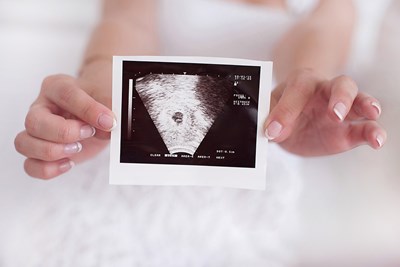High-risk pregnancies are those in which the mother has additional complications that may, in some way, impact the pregnancy or health of the mother or baby. The increasing use of fertility drugs, the chances of multiples, women waiting until their late thirties to begin motherhood, and the wide range of disorders that affect women of every age, can cause high-risk pregnancy. These pregnancies don’t have to be frightening, as long as you find the right medical care and actively manage complications. Here’s a look at understanding what makes a pregnancy high-risk.
Age as a Risk Factor
The most common indicator of elevated risk is the age of the woman at the time of pregnancy. Women who are nearing the end of their childbearing years are the most at risk for pregnancy complications -- the typical age of concern starts at 35 years old.
In addition to age itself increasing prenatal risks (for example, the risk of miscarriage becomes higher), age can make other issues more likely to develop. Potential problems such as chromosomal abnormalities, underlying health problems, and labor/delivery dangers become more common. Not only are older women more likely to already have preexisting conditions, they’re also more likely to develop gestational diseases, such as preeclampsia or diabetes.
Conversely, becoming pregnant at a very young age can also increase the dangers of pregnancy. Adolescent bodies are less suited for childbearing compared even to women in their 20’s. Babies born to teenagers, particularly girls under 15, are more likely to develop anemia, preeclampsia, have a lower birth weight, and arrive preterm. This is particularly true in teens who don’t receive the prenatal support they need, both medically and familially.
Gestational Complications
With each pregnancy, there are certain risks that are associated with even the healthiest of expectant mothers. One of the complications that may arise during gestation is preeclampsia/eclampsia. This condition occurs when the mother experiences high blood pressure, elevated liver enzymes, and extreme fluid retention. The dangers of this condition usually requires hospitalization and bed rest for the duration of the pregnancy. In some cases, the dangers of carrying the pregnancy to full term may outweigh the risks of delivering the baby early.
Gestational diabetes is another very common condition and can become extremely serious. This condition results from hormonal changes in the mother's body which causes the pancreas to experience difficulty regulating insulin. Most obstetricians, even in an otherwise normal pregnancy, will test the mother for the presence of gestational diabetes around the sixth month. The majority of gestational diabetes cases resolve themselves after the birth of the baby.
Other Issues that Contribute to High-Risk Pregnancies
There are many other issues that can put a pregnant woman into the “high-risk” category, like blood disorders. For example, Factor V Leiden is a clotting disorder in which the person is more likely to clot inappropriately. Because of increased estrogen during pregnancy, the risk of clotting becomes even higher, sometimes even meriting a special high-risk obstetrician.
According to the National Institute of Health, other preexisting conditions generally considered high-risk include:
- Heart, liver, kidney, or other major organ issues
- Autoimmune or sexually transmitted diseases
- Chronic infections
- Thyroid diseases
- Reproductive issues (such as polycystic ovary syndrome)
- Obesity
- Infertility
- Drug use, cigarette smoking, or alcoholism
In addition to preeclampsia and gestational diabetes, problems that may arise during the pregnancy and merit high-risk categorization include:
- Placenta previa
- Multiples (twins, triplets, etc)
- Premature labor
- Eclampsia



